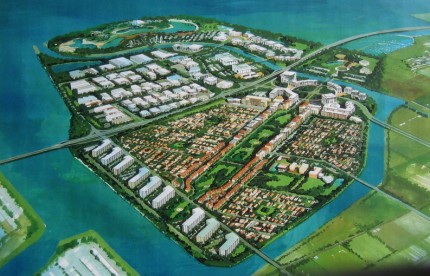In 1956, the Spanish architect Josep Lluis Sert convened an international conference at Harvardâs Graduate School of Design to investigate the emerging discipline of ’urban design’. Sert wanted the conference âto find the common basis for the joint work of the Architect, the Landscape Architect and the City Plannerâ¦.Urban Design [being] wider than the scope of these three professionsâ. Those attending were concerned that the widening split between the âart of buildingâ and the âsystemic nature of planningâ was not helpful to city building and were hopeful that a new discipline could stem this perceived split between design and planning.
This opportunity arose in New York in the late 1960’s when Mayor John Lindsay established the Mayorâs Task Force on Urban Design in 1966. The Task Force recommended the creation of a specialist design section within the city planning department called the Urban Design Group. When the city council refused to pass the city planning departmentâs 1968 master plan, the Urban Design Group used the cityâs zoning legislation to prepare smaller scale plans for localised areas. These were more flexible and represented an important shift away from top-down planning that enabled local issues to be more directly addressed and specific development opportunities to be realised.
The term ‘urban design’ is now used in a variety of ways- ranging from the integrated design of elements in a local streetscape (such as stormwater systems, paving, street furniture and lighting) to the holistic three-dimensional vision for entire neighbourhoods encompassing buildings, infrastructure and open space.
As recognised by Sert in 1956, the broad and diverse nature of urban design usually requires the collaboration of different design specialists to resolve the various and often competing requirements necessary to service and support an urban community.
So whilst the term âurban designâ may be confusing; and the scale and type of projects can vary; âurban designâ could be said to be a collaborative process concerned with the designed integration of urban elements for the purpose of delivering optimum outcomes that provide maximum benefit to most of the people.
At LVO, our urban design team not only understands but addresses the issues across the realm of urban design, from both a generalist and a specialist point of view. With our highly experienced urban design team and capabilities in architecture, landscape architecture and visual assessment, LVO has the capabilities required to deliver holistic outcomes that encompass all facets of the urban realm including buildings, infrastructure and open space.
Some examples of projects our urban design team has worked on include:
Boggabri Masterplan, NSW
West Coomera Masterplan, Qld
Tomigusuku Community, Okinawa, Japan
Redland Bay Foreshore Masterplan, Qld
Grosvenor Village Masterplan, Qld
Understanding how people use and move around places, and interactions between nature and the built environment is key in designing places that are not only successful aesthetically but successful in their function. LVO has the experience, knowledge and capabilities to deliver optimum urban design outcomes that integrate urban elements for the purpose of providing maximum benefit to the most people.
For more information on this article, please contact Leslie Curtis at leslie.curtis@lvo.com.au

